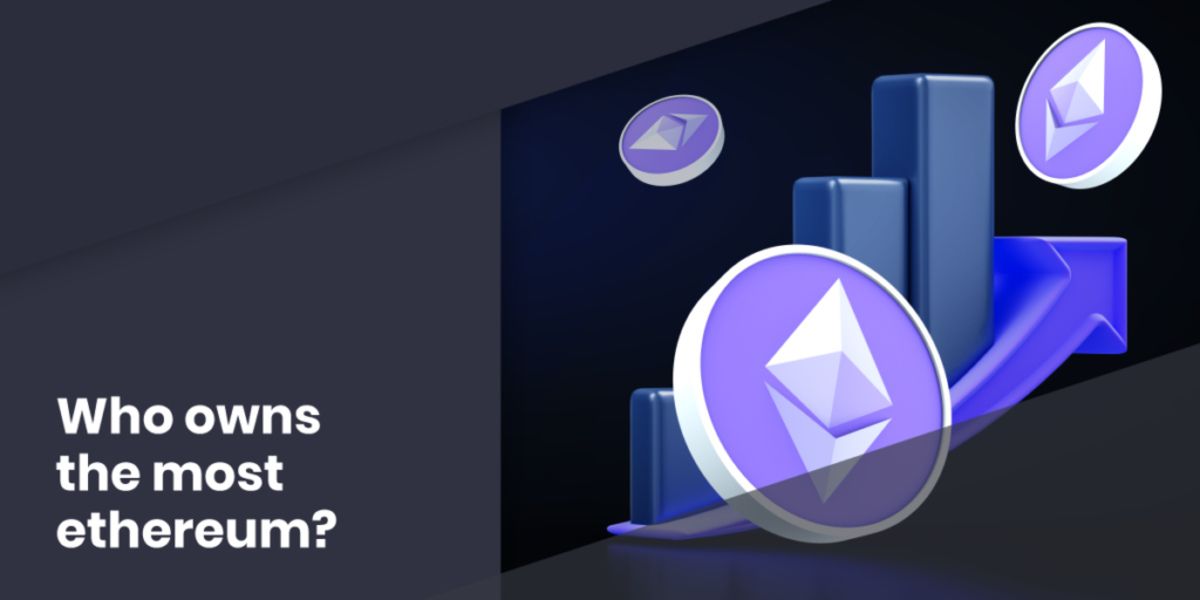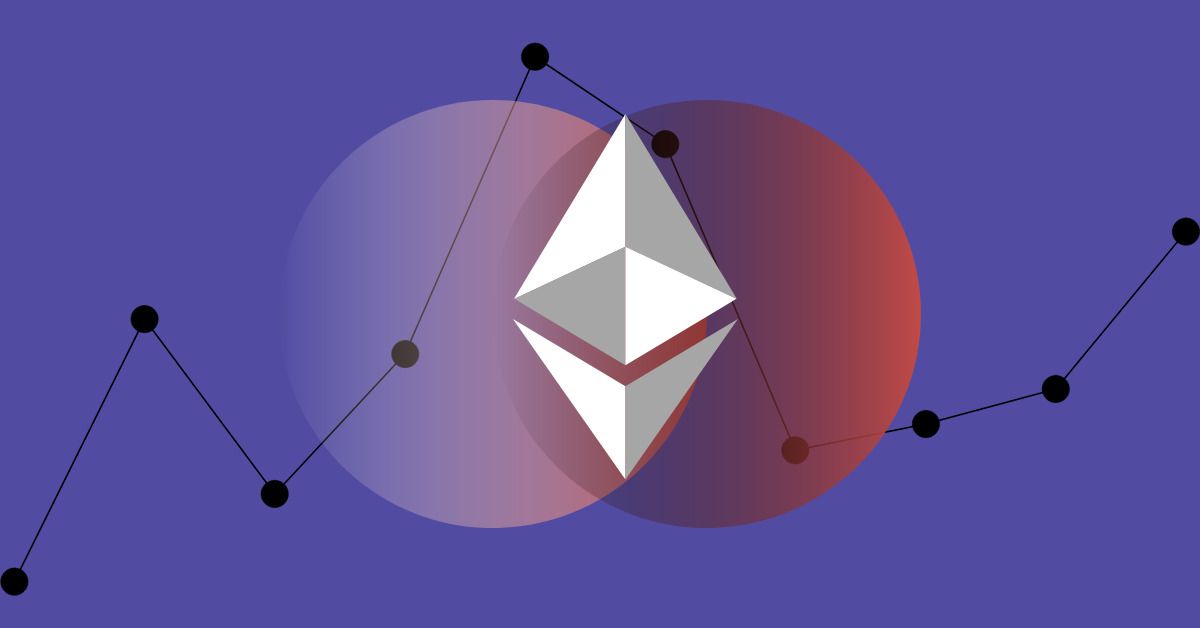Introduction
Ethereum has emerged as a leading cryptocurrency and blockchain platform since its launch in 2015. Created by Vitalik Buterin, Ethereum has gained widespread attention and is viewed by many as the future of decentralized applications and smart contracts.
Unlike Bitcoin, which is primarily used as digital currency, Ethereum goes beyond being a medium of exchange. It is a blockchain-based platform that allows developers to build and deploy decentralized applications (DApps) and execute smart contracts. This opens up a whole new world of possibilities for industries such as finance, supply chain, healthcare, gaming, and more.
The fundamental concept behind Ethereum is its ability to create and fulfill smart contracts. These are self-executing agreements that automatically execute when predefined conditions are met. Smart contracts remove the need for intermediaries, making transactions more transparent, efficient, and secure.
Ethereum operates on a decentralized network of computers, known as nodes, which collectively maintain the blockchain. The platform’s native currency, Ether (ETH), serves as a fuel for powering transactions and running DApps on the network.
In recent years, Ethereum has seen significant developments and upgrades aimed at improving scalability, security, and sustainability. The transition from Proof of Work (PoW) to Proof of Stake (PoS) through the Ethereum 2.0 upgrade promises to greatly enhance the platform’s efficiency and reduce environmental impact.
Despite its strengths, Ethereum does face challenges. Scalability remains a major issue, as the current network can handle only a limited number of transactions per second. Additionally, interoperability with other blockchain platforms and addressing potential security vulnerabilities require continuous efforts.
Looking ahead, the outlook for Ethereum is promising. Its rapidly growing ecosystem of developers, innovative projects, and strong community support contribute to its resilience and growth potential. With ongoing upgrades and advancements, Ethereum continues to solidify its position as a leading blockchain platform, driving the widespread adoption of decentralized applications and revolutionizing various industries.
In the following sections, we will delve deeper into how Ethereum works, explore recent developments and upgrades, discuss its strengths and challenges, and outline its future outlook.
What Is Ethereum?
Ethereum is a decentralized blockchain platform that allows developers to build and deploy decentralized applications (DApps) and execute smart contracts. Created by Vitalik Buterin in 2015, Ethereum expanded the potential of blockchain technology beyond digital currency transactions, like Bitcoin, and introduced a programmable platform for diverse applications.
At its core, Ethereum operates on a peer-to-peer network of computers known as nodes. These nodes collectively maintain a global ledger called the blockchain, which records all transactions and smart contract executions. Ether (ETH) is the native cryptocurrency of Ethereum, serving multiple purposes on the network. It acts as a medium of exchange, incentivizes node operators, and fuels transactions and computations within the platform.
One of the key innovations of Ethereum is the concept of smart contracts. Smart contracts contain code that automatically executes predefined actions when specific conditions are met. This eliminates the need for intermediaries and allows for the creation of self-executing agreements for various applications.
Ethereum’s programming language, Solidity, enables developers to write smart contracts and build decentralized applications. This has led to the emergence of a vibrant ecosystem of DApps across industries such as finance, supply chain management, healthcare, gaming, and decentralized finance (DeFi).
Decentralized finance, or DeFi, has become a major growth driver for Ethereum. DeFi applications leverage the programmable nature of Ethereum to offer innovative financial services such as lending, borrowing, yield farming, and decentralized exchanges. These applications, often built on the Ethereum blockchain, provide users with increased accessibility, lower fees, and enhanced financial autonomy.
Ethereum has also become a platform for token creation and crowdfunding through Initial Coin Offerings (ICOs) and Initial DEX Offerings (IDOs). These fundraising mechanisms allow projects to raise capital by issuing their own digital tokens on the Ethereum blockchain.
The Ethereum blockchain has seen tremendous growth since its inception, with countless projects, developers, and users contributing to its ecosystem. The Ethereum Virtual Machine (EVM), a decentralized computer within the Ethereum network, enables the execution of smart contracts and ensures their consistency across all nodes.
Overall, Ethereum has revolutionized the potential of blockchain technology by providing a platform for decentralized applications and smart contracts. Its programmable nature, supported by a robust ecosystem, has opened up new possibilities for innovation and disruption across multiple industries.
In the next section, we will explore how Ethereum works, diving into the technical aspects that underpin its functionality and operations.
How Does Ethereum Work?
Ethereum operates on a decentralized network of computers that collectively maintain a blockchain. This network is composed of nodes, which are responsible for validating transactions and executing smart contracts. To understand how Ethereum works, let’s dive into its key components and processes.
1. Blockchain: Ethereum’s blockchain is a distributed ledger that records all transactions and smart contract executions. It consists of a series of blocks, with each block containing a list of transactions. The blockchain is maintained and synchronized across all participating nodes in the network.
2. Nodes: Nodes are computers or devices that connect to the Ethereum network. There are two types of nodes: full nodes and light nodes. Full nodes keep a complete copy of the blockchain and process all transactions and smart contracts. Light nodes, on the other hand, only store and verify specific parts of the blockchain, relying on full nodes for additional information.
3. Smart Contracts: Smart contracts are self-executing agreements written in Solidity, Ethereum’s programming language. They automatically execute predefined actions when certain conditions are met. Smart contracts are stored on the blockchain and are accessible to anyone on the network. They enable the creation of decentralized applications and facilitate trustless interactions between parties.
4. Ethereum Virtual Machine (EVM): The Ethereum Virtual Machine is a decentralized computer that runs on every node in the network. It executes smart contracts and ensures their consistency across all nodes. The EVM provides a secure and deterministic environment for executing code, making Ethereum a reliable platform for building and deploying decentralized applications.
5. Gas: Gas is a measure of computational effort required to execute operations on the Ethereum network. Every operation, such as a transaction or smart contract execution, consumes a specific amount of gas. Gas fees are paid in Ether and serve as an incentive for nodes to process transactions and execute smart contracts. The gas limit determines the maximum amount of computational work allowed per block.
6. Mining: Ethereum initially relied on a Proof of Work (PoW) consensus algorithm, similar to Bitcoin. Miners compete to solve complex mathematical puzzles in order to validate and add transactions to the blockchain. However, Ethereum is transitioning to a Proof of Stake (PoS) consensus mechanism through Ethereum 2.0. PoS eliminates the need for miners, as validators with a stake in Ether secure the network by participating in the consensus process.
7. Upgrades and Hard Forks: Ethereum regularly undergoes upgrades and improvements to address scalability, security, and sustainability concerns. These upgrades are implemented through hard forks, which are backward-incompatible changes to the protocol. Notable upgrades include the London hard fork that introduced the EIP-1559 fee structure, and the upcoming Ethereum 2.0 upgrade, which aims to improve scalability and energy efficiency.
By leveraging its decentralized network, smart contracts, and the Ethereum Virtual Machine, Ethereum provides a secure and adaptable platform for developers to build innovative decentralized applications. The platform’s continuous development and upgrades ensure its evolution and long-term viability.
In the next section, we will discuss recent developments and upgrades that have shaped Ethereum’s journey.
Recent Developments and Upgrades
Ethereum has undergone significant developments and upgrades over the years to address scalability, security, and sustainability concerns. These enhancements have played a crucial role in shaping the platform’s evolution and expanding its capabilities.
One notable upgrade is the London hard fork, implemented in August 2021. This upgrade introduced several improvements, the most significant being the EIP-1559 fee structure. EIP-1559 changed the way transaction fees are calculated and managed on the Ethereum network. It introduced a base fee that is burned during each transaction, reducing the supply of Ether over time. This change has brought transparency and predictability to fee calculations and aims to make transactions more efficient and user-friendly.
Another significant development is the ongoing transition from Proof of Work (PoW) to Proof of Stake (PoS) through the Ethereum 2.0 upgrade. PoS aims to address scalability and environmental concerns associated with PoW by allowing validators to secure the network based on the amount of Ether they hold and are willing to “stake.” This transition involves the implementation of shard chains, which will allow Ethereum to process a significantly higher number of transactions in parallel. Ethereum 2.0 is being rolled out in multiple phases, with the Beacon Chain launch being the first milestone in this ambitious upgrade.
Layer 2 solutions have also emerged as a critical development in the Ethereum ecosystem. These solutions aim to enhance scalability by moving some transactions and computations off the main Ethereum blockchain. Projects such as Optimism, Arbitrum, and Polygon have implemented Layer 2 solutions that enable faster and cheaper transactions, improve user experience, and relieve congestion on the Ethereum network. These Layer 2 solutions provide scalability benefits while still leveraging the security of the Ethereum mainnet.
Additionally, developments in decentralized finance (DeFi) have continued to flourish on the Ethereum network. DeFi applications have gained significant traction, allowing users to engage in lending, borrowing, yield farming, and decentralized exchanges. New protocols and innovations are constantly being introduced, further expanding the capabilities and accessibility of decentralized finance on Ethereum.
Furthermore, the Ethereum ecosystem has witnessed the emergence of non-fungible tokens (NFTs) as a result of recent developments. NFTs have revolutionized the concept of digital ownership and provenance, allowing for the creation and trading of unique digital assets. From digital art and collectibles to virtual real estate and in-game items, the NFT market has seen exponential growth and showcases the versatility of Ethereum’s blockchain technology.
Overall, the recent developments and upgrades in Ethereum have addressed critical challenges and pushed the boundaries of what is possible on the platform. The London hard fork, Ethereum 2.0 upgrade, Layer 2 solutions, and the rise of DeFi and NFTs are all testament to the continuous innovation and improvement within the Ethereum ecosystem.
In the next section, we will explore the strengths that contribute to Ethereum’s position as a leading blockchain platform.
Strengths of Ethereum
Ethereum possesses several key strengths that have contributed to its position as a leading blockchain platform. These strengths have played a significant role in driving the widespread adoption of Ethereum for decentralized applications, smart contracts, and the broader blockchain ecosystem.
1. Programmability and Smart Contracts: One of Ethereum’s most significant strengths is its programmable nature, which enables developers to build decentralized applications (DApps) and execute smart contracts. Smart contracts allow for the creation of transparent, self-executing agreements without the need for intermediaries. This feature has opened up a wide range of possibilities across multiple industries, including finance, supply chain, gaming, and more.
2. Vibrant Ecosystem and Developer Community: Ethereum boasts a vibrant and active ecosystem of projects, developers, and users. The platform’s open-source nature encourages collaboration and innovation, driving the continuous development of new applications and use cases. Ethereum’s developer community is robust, with an extensive knowledge base, resources, and toolkits available to support the creation of decentralized applications.
3. Established Network and Adoption: Ethereum has established itself as one of the most widely adopted blockchain platforms in the world. It has a large network of nodes and users, which contributes to the security and decentralization of the platform. Being the foundation for numerous successful projects and protocols in areas such as DeFi, NFTs, and crowdfunding, Ethereum has gained significant traction and recognition within the blockchain industry.
4. Interoperability and Standards: Ethereum fosters interoperability with other blockchain platforms through the use of standards such as ERC-20 (token standard), ERC-721 (NFT standard), and ERC-1155 (multi-token standard). These standards enable seamless integration and interaction between different projects and tokens, facilitating collaboration and expanding the possibilities for decentralized applications.
5. Continuous Development and Upgrades: Ethereum has demonstrated its commitment to ongoing development and upgrades. The platform regularly undergoes improvements to address scalability, security, and sustainability concerns. Recent upgrades, such as the London hard fork and the upcoming Ethereum 2.0 transition, showcase the dedication to enhancing the functionality and performance of the network.
6. Decentralized Finance (DeFi): Ethereum has become the go-to platform for decentralized finance (DeFi) applications. From lending and borrowing platforms to decentralized exchanges and yield farming protocols, Ethereum has become the foundation for a thriving DeFi ecosystem. The ability to build complex financial applications on Ethereum has revolutionized the way users access and interact with financial services, providing greater accessibility, transparency, and innovation.
7. Strong Community Support: Ethereum benefits from a passionate and supportive community that actively contributes to the growth and development of the platform. The community includes developers, users, investors, and enthusiasts who help drive adoption, provide feedback, and contribute to the overall success and resilience of the Ethereum ecosystem.
These strengths position Ethereum as a versatile and robust blockchain platform, capable of revolutionizing various industries and driving the adoption of decentralized applications and smart contracts. Its programmability, vibrant ecosystem, adoption, interoperability, continuous development, DeFi dominance, and community support are all factors that contribute to Ethereum’s prominence in the world of blockchain technology.
In the next section, we will discuss the challenges that Ethereum faces as it continues to grow and evolve.
Challenges Facing Ethereum
While Ethereum has achieved remarkable success as a leading blockchain platform, it also faces several challenges that need to be addressed as it continues to grow and evolve. These challenges present opportunities for improvement and innovation within the Ethereum ecosystem.
1. Scalability: One of the primary challenges facing Ethereum is scalability. The current network has limitations in terms of transaction throughput and processing speed. As the popularity of Ethereum and the number of decentralized applications (DApps) grow, the network can become congested, leading to high gas fees and slower transaction confirmations. Scaling solutions such as Ethereum 2.0 and Layer 2 technologies, like Optimistic Rollups and zk-SNARKs, aim to address these scalability issues, but further development and adoption are needed.
2. Gas Fees and Transaction Costs: Ethereum’s current fee structure, combined with network congestion, can result in high transaction costs. High gas fees have made some transactions economically infeasible for certain users, limiting accessibility and hindering the growth of decentralized applications. The implementation of EIP-1559 with the London hard fork has helped address this issue, but further optimization and improvements are necessary to ensure cost-efficient transactions for all users.
3. Environmental Impact: Ethereum’s current Proof of Work (PoW) consensus algorithm requires significant computational resources, leading to high energy consumption. As the push for environmental sustainability increases, the need for energy-efficient alternatives becomes paramount. The ongoing transition to Proof of Stake (PoS) through Ethereum 2.0 aims to improve the platform’s energy efficiency, but the full migration is still in progress and needs to be successfully implemented to reduce Ethereum’s carbon footprint.
4. Interoperability and Standards: While Ethereum has established important standards such as ERC-20 and ERC-721, interoperability with other blockchain platforms remains a challenge. Seamless integration and communication between different blockchains would enable a more interconnected and efficient ecosystem. Efforts such as cross-chain bridges and interoperability protocols are emerging to tackle this challenge, facilitating the exchange of assets and information between Ethereum and other blockchains.
5. Security and Smart Contract Auditing: Smart contracts, while revolutionary, can be vulnerable to bugs, exploits, and hacks. The need for thorough auditing and stronger security practices is evident to mitigate risks associated with smart contract vulnerabilities. Additionally, with the growing complexity and interconnectivity of decentralized applications, ensuring the security of the entire Ethereum ecosystem becomes more challenging, requiring continuous monitoring, testing, and improvements in security protocols.
6. Regulatory Environment: The regulatory landscape for blockchain and cryptocurrencies remains uncertain in many jurisdictions. While Ethereum strives for decentralization, regulatory compliance is essential to ensure its long-term adoption and integration into existing financial systems. Compliance with evolving regulations, including taxation, securities laws, and anti-money laundering measures, presents ongoing challenges and considerations for the Ethereum ecosystem.
7. User Experience and Adoption: Ethereum’s success depends on its ability to provide a user-friendly experience for developers and end-users. Improving the usability of decentralized applications and reducing the barriers to entry for non-technical users are crucial to driving widespread adoption. Enhancing user interfaces, simplifying wallet management, and streamlining transaction processes will be vital in ensuring Ethereum’s accessibility and usability.
By addressing these challenges, Ethereum can reinforce its position as a leading blockchain platform and overcome the obstacles inhibiting its scalability, cost-efficiency, security, interoperability, regulatory compliance, and user experience. The Ethereum community and developers continue to innovate and collaborate to find solutions and advancements to address these challenges and further enhance the platform’s capabilities.
In the next section, we will discuss the future outlook for Ethereum and the potential impact it can have on various industries.
Outlook for Ethereum
The future outlook for Ethereum is highly promising, demonstrating the potential for continued growth, innovation, and widespread adoption across various industries. The platform’s ongoing developments, upgrades, and expanding ecosystem contribute to this positive outlook.
Ethereum 2.0, the transition to Proof of Stake (PoS) consensus mechanism, is expected to bring significant improvements in terms of scalability, energy efficiency, and transaction throughput. As more shards are implemented, the Ethereum network will be able to process a significantly higher number of transactions in parallel, providing a scalable infrastructure for decentralized applications (DApps) and smart contracts.
The implementation of Layer 2 solutions has already shown promising results in terms of reducing gas fees and enhancing transaction speed. With projects like Optimism, Arbitrum, and Polygon, the Ethereum ecosystem is able to offload some transactions and computations off the main Ethereum blockchain, ensuring a smoother user experience and alleviating network congestion.
The growth of decentralized finance (DeFi) on Ethereum is expected to continue as innovative protocols and applications emerge. DeFi has already disrupted traditional financial systems by providing decentralized lending, borrowing, yield farming, and decentralized exchanges. With increased accessibility and improved infrastructure, DeFi on Ethereum has the potential to revolutionize the way people interact with and access financial services.
Non-fungible tokens (NFTs) have gained significant traction, and Ethereum has been at the forefront of this market. NFTs have opened up new opportunities for digital ownership and provenance, spanning art, collectibles, gaming, and more. The adoption and integration of NFTs into various industries are expected to continue, adding value and utility to digital assets.
Ethereum’s developer community continues to thrive, driving innovation and creating new use cases for the platform. The availability of developer tools, resources, and a robust knowledge base ensures a steady stream of decentralized applications being built on Ethereum. This developer ecosystem contributes to the platform’s resilience and adaptability to changing market demands.
Interoperability between Ethereum and other blockchains is an area of active development. Projects and initiatives that enable seamless integration and communication between different blockchain ecosystems can create a more interconnected and efficient decentralized landscape. The ability to exchange assets and information seamlessly between different blockchains will unlock new possibilities and enhance the overall usability and functionality of Ethereum.
While challenges such as scalability, security, and regulatory compliance exist, the Ethereum community is dedicated to addressing these issues and finding viable solutions. Ongoing developments, upgrades, and collaboration will continue to refine Ethereum’s capabilities and ensure its long-term sustainability.
As Ethereum advances, it has the potential to revolutionize industries beyond finance, such as supply chain, healthcare, gaming, and governance. Smart contracts and decentralized applications have the power to streamline processes, remove intermediaries, enhance transparency, and redefine traditional business models.
The future of Ethereum is bright, with its strong foundations, continuous development, expanding ecosystem, and a passionate community. With its programmability, scalability improvements, DeFi dominance, growing NFT market, and developer support, Ethereum is well-positioned to shape the future of blockchain technology and bring about a decentralized revolution in countless industries.
In the concluding section, we will summarize the key points discussed and highlight the potential impact of Ethereum’s future advancements.
Conclusion
Ethereum has established itself as a leading blockchain platform, revolutionizing the world of decentralized applications, smart contracts, and blockchain-based innovation. Its programmability, vibrant ecosystem, and widespread adoption have positioned Ethereum at the forefront of the blockchain revolution.
With its ability to execute smart contracts and support decentralized applications, Ethereum has expanded the boundaries of what blockchain technology can achieve. The platform’s ongoing developments and upgrades, such as the London hard fork and the transition to Ethereum 2.0, address critical challenges of scalability, energy efficiency, and usability, paving the way for a more robust and sustainable future.
Ethereum’s strengths lie in its programmable nature, vibrant developer community, and interoperability standards. The platform enables the creation of transparent, self-executing agreements through smart contracts, and its extensive ecosystem fosters innovation, collaboration, and adoption within the blockchain space.
Challenges such as scalability, security, and regulatory compliance continue to be addressed by the Ethereum community. Ongoing efforts to improve these areas, along with advancements in Layer 2 solutions and interoperability, will contribute to the platform’s growth and appeal.
The future outlook for Ethereum is highly promising, with potential for continued growth, innovation, and widespread adoption. Its scalability improvements, dominance in decentralized finance (DeFi) and non-fungible tokens (NFTs), and the strength of its developer community position Ethereum as a driving force in transforming various industries.
Ethereum’s impact extends beyond finance, as its programmable infrastructure has the potential to reshape supply chain, healthcare, gaming, and governance systems, to name a few. Its advancements in scalability, interoperability, and usability will unlock new possibilities and accelerate the adoption of blockchain technology worldwide.
In conclusion, Ethereum’s journey has been marked by remarkable achievements, transformative technologies, and a resilient community. As it navigates the challenges and embraces opportunities, Ethereum continues to shape the future of decentralized applications, smart contracts, and the broader blockchain ecosystem.

























